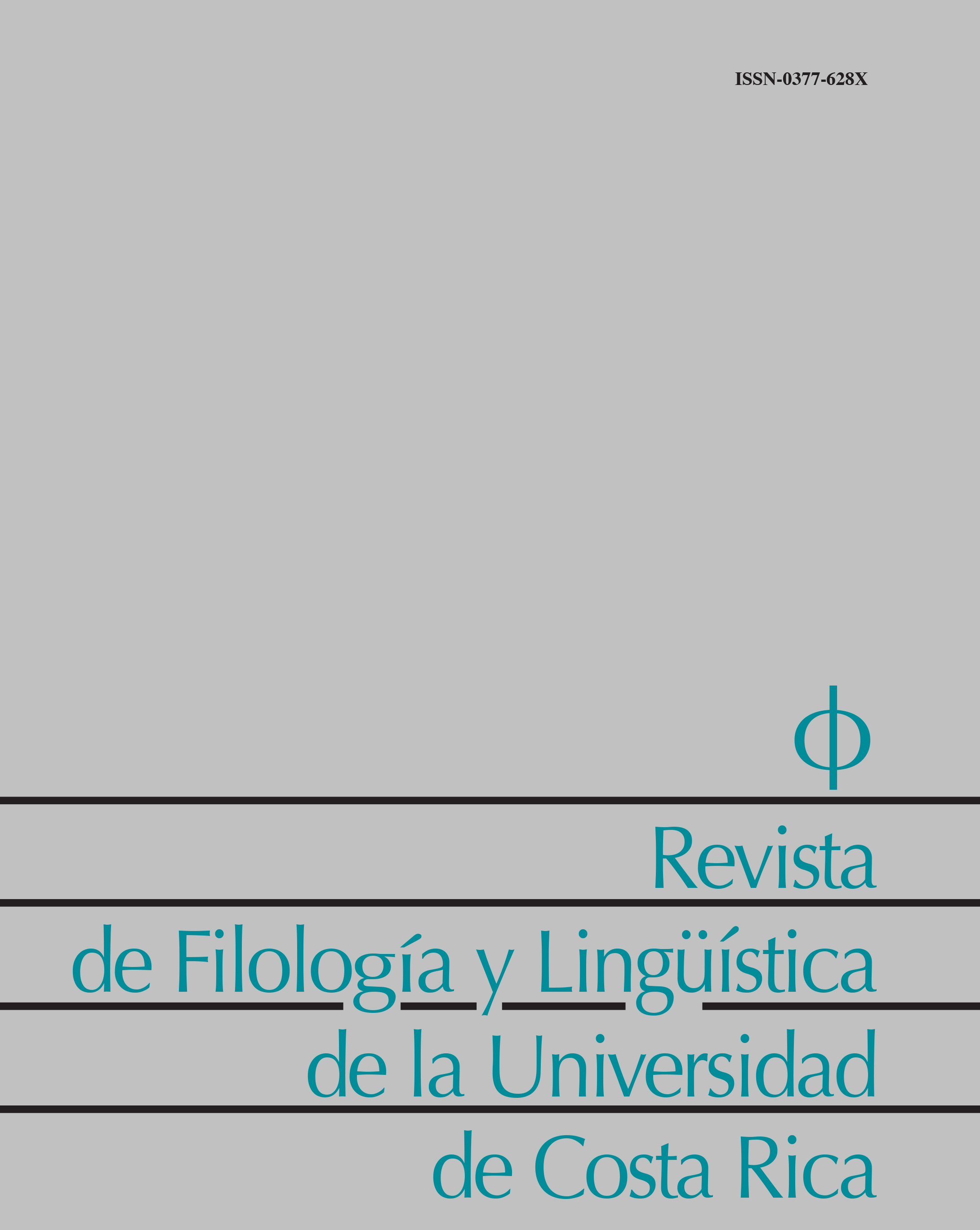Abstract
Error treatment in L2 teaching and learning processes has been traditionally considered as the rectification to a deviation of standard rules found in L2 student´s linguistic productions. Nowadays, we recognize it as a global concept that encompasses a series of related components: detection, acceptance and correction among others. The concepts of error, error correction and feedback (as an important part of error correction process) are receiving constant attention and action from teachers, linguists and specialists in Didactics. They all have been considered a focus of attention and they have been included in the second language (L2) teaching-learning process. The purpose of this study is to identify correction and feedback as processes related to error treatment from the L2 student´s perspective focusing our attention in the knowledge, the abilities and the attitudes they have towards error treatment in L2 writing composition.
References
Campbell, C. (1998). Teaching Second-Language Writing: Interacting with a Text. Scarborough: Heinle & Heinle.
Cassany, D. (1993). Reparar la escritura. Didáctica de la corrección de lo escrito. Barcelona: Graó.
Cassany, D. (2009). La composición escrita en E/LE. Didáctica del Español como Lengua
Extranjera. Expolingua. 9, 47-66.
Centro Virtual Cervantes (1997-2017). Feedback>Retroalimentación. Diccionario de Términos Clave de ELE (versión electrónica). Recuperado de http://cvc.cervantes.es/ensenanza/
biblioteca_ele/diccio_ele/diccionario/
Constantinescu, I. (2011). Dictionnaire pratique de didactique du français langue étrangère
(F.L.E). Bucureşti: Fundaţia România de Mâine.
d’Aquino, A. (2016). ¡De los errores se aprende! La corrección como instrumento didáctico.
Textos. Didáctica de la Lengua y de la Literatura. 71, 7-13.
de la Torre, S., Mallart, J., Tort, Ll., Rajadell, N., Laffitte, R. y Oliver, C. (1994). Errores
y currículo. Tratamiento didáctico de los errores en la enseñanza. Barcelona: Promociones y publicaciones universitarias.
Dumbrăvescu, D. G. (2017). Los manuales escolares y la formación inicial del profesorado de ELE. Valencia: Educalia.
Durán, R. (2011). Guidelines for Error Correction in the EFL Classroom. En S. House (Coord.). Inglés. Investigación, innovación y buenas prácticas. (pp. 61- 67). Barcelona: Graó.
Fathman, A. K. y Whalley, E. (1990). Teacher response to student writing: focus on form
versus content. En B. Kroll (Ed.). Second Language Writing. Research insights for the classroom. (pp. 178-190). Cambridge: Cambridge University Press.
Fernández-López, S. (1995). Errores e interlengua en el aprendizaje del español como lengua extranjera. Didáctica. 7, 203-216.
Fernández, S. (1997). Interlengua y análisis de errores en el aprendizaje del español como
lengua extranjera. Madrid: Edelsa.
Ferris, D. y Hedgcock, J. (1998). Teaching ESL composition: Purpose, process, and practice.
Mahwah, NJ: Lawrence Erlbaum Associates.
Ferris, D. (2003). Response to Student Writing: Implications for Second Language Students.
Mahwah, NJ.: Routledge.
García-Heras Muñoz, A. (2004). Lingüística y enseñanza: el tratamiento de los errores en la
enseñanza del inglés como lengua extranjera. Docencia e investigación: revista de la Escuela Universitaria de Magisterio de Toledo. 14, 49-70.
Gardner, R. C. (2010). Motivation and second language acquisition: The socio-educational
model. New York, NY.: Peter Lang.
Gascoigne, C. (2004). Examining the Effect of Feedback in Beginning L2 Composition.
Foreign Language Annals. 37 (1), 71-76.
Giovannini, A. Martín-Peris, E., Rodríguez-Castilla, M., y Simón-Blanco, T. (1996). Profesor
en Acción. (Vol. 2). Madrid: Edelsa.
Guillén-Díaz, C. y Castro-Prieto, P. (1998). Manual de autoformación para una didáctica de
la lengua-cultura extranjera. Madrid: La Muralla.
Guillén-Díaz, C. (2004). Error. En F. Salvador-Mata, J. L. Rodríguez-Diéguez y A. Bolívar-Botía (Dirs.). Diccionario Enciclopédico de Didáctica. (Vol. 1). (p. 627). Málaga: Aljibe.
Jericó, P. (9 de julio de 2013). Cómo dar un buen “feedback”. El País. Recuperado de https://elpais.com/elpais/2013/07/09/laboratorio_de_felicidad/1373353794_137335.html
Jiménez-González, J. E. y Muñetón-Ayala, A. (2002). Dificultades de aprendizaje de la escritura. Aplicaciones de la psicolingüística y de las nuevas tecnologías. Madrid: Trotta.
Leki, I. (1990). Coaching from the margins: issues in written response. En B. Kroll (Ed.).
Second Language Writing. Research insights for the classroom. (pp. 57-68). Cambridge: Cambridge University Press.
López-Hernández, A. (2009). Feedback y corrección de errores en el aula de L2 (I): actividades orales. Educación y futuro: revista de investigación aplicada y experiencias educativas.
, 65-78. Recuperado de https://dialnet.unirioja.es/servlet/articulo?codigo=3233775
Merino Mañueco, S. (2016). El análisis de errores en los enfoques actuales de enseñanza-aprendizaje de segundas lenguas. En M.ª Á. Lamolda González (Comp.). La formación y competencias del profesorado de ELE. Actas del XXVI Congreso Internacional ASELE. (pp. 693-698). Granada: Universidad de Granada.
Ministerio de Educación, Cultura y Deporte. (2002). Marco Común Europeo de referencia
para las lenguas: aprendizaje, enseñanza, evaluación. Madrid: Secretaría General Técnica del MECD y Grupo Anaya.
Pawlak, M. (2014). Error correction in the foreign language classroom. Reconsidering the
issues. Second Language Learning and Teaching Series. Berlin. Heidelberg: Springer-
Verlag. doi: 10.1007/978-3-642-38436-3_4
Rach, S., Ufer, S. y Heinze, A. (2013). Learning from errors: effects of teachers training on
students’ attitudes towards and their individual use of errors. PNA. 8 (1), 21-30.
Roy, D. (1991). Les enseignants et les enseignantes exercent-ils une réelle influence sur
l’apprentissage au collégial? Pédagogie collégiale. 5 (1), 37-40.
Santos-Gargallo, I. y Alexopoulou, A. (2014). Creencias y actitudes de profesores y alumnos
griegos de español ante las técnicas de corrección en la interacción oral: estudio comparativo intragrupos. Didáctica. Lengua y Literatura, 26, 429-446.
Torijano-Pérez, J.A. (2004). Errores de aprendizaje, aprendizaje de los errores. Madrid: Arco Libros.
Truscott, J. (1996). Review Article. The Case Against Grammar Correction in L2 Writing Classes. Language Learning. 46 (2), 327-369.
Vargas-Venegas, G. (2008). Desarrollo de la fluidez oral en ELE mediante los periódicos, las canciones, las películas y los juegos. (Memoria de Máster en Formación de profesores de español como lengua extranjera). Universidad de León en colaboración con la Fundación Universitaria Iberoamericana (FUNIBER). Recuperado de https://www.mecd.gob.es/dam/jcr:10d0a665-9f07-4c61-927d-7b4681ed482c/2010-bv-11-
vargas-pdf.pdf
Vez, J. M. (Ed.), Guillén, C. y Alario, C. (2002). Didáctica de la lengua extranjera en educación infantil y primaria. Madrid: Síntesis.
Zamel, V. (1985). Responding to Student Writing. TESOL Quarterly. 19 (1), 79-101. doi:10.2307/3586773.

